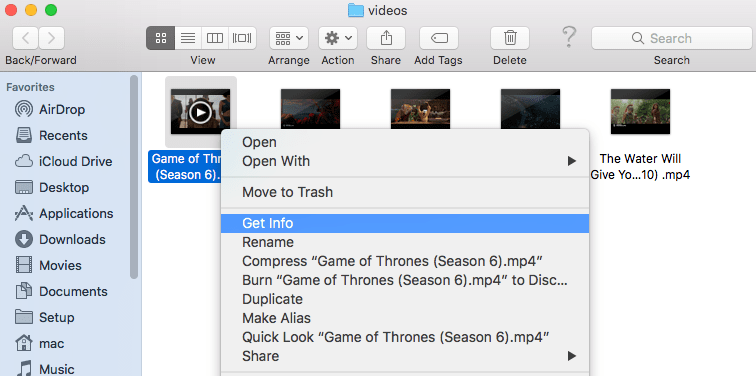
- #How to change default media player mac 2917 how to#
- #How to change default media player mac 2917 install#
- #How to change default media player mac 2917 software#
- #How to change default media player mac 2917 code#
MIT-licensed implementation of RandLANet. New Python examples for reconstruction and voxelization. Corrected an issue with io::AddTrianglesByEarClipping() where the algorithm could fail for concave polygons. TriangleMesh GetSelfIntersectingTriangles() and related functions like IsWatertight(), GetVolume(), etc. Added a new parameter for robust convex hull computation.  Convex hull meshes created from point clouds now have outward-pointing triangles. added a new parameter for robust oriented bounding box computation for degenerated point clouds. Fixed an issue where the orientation of the OrientedBoundingBox was mirrored. Point picking, text input, and UI layout (contributed by Oriented Bounding Box. Open3D for TensorBoard plugin does not need Open3D-ML now. WidgetProxy and WidgetStack widgets allow the creation of user interfaces on the fly (contributed by Background color option for button widgets (contributed by Set maximum visible items in a list widget to prevent lists from growing too large (contributed by Function keys are now bindable (contributed by Support for specifying intrinsic projection matrix in the new visualizer. Mesh = o3d.io.read_triangle_model('/home/open3d/development/FlightHelmet/FlightHelmet.gltf') Method 2: Preload library in Python import ctypesĬ('/home/open3d/development/mesa-21.3.4/libGL.so') LD_PRELOAD=/home/open3d/development/mesa-21.3.4/libGL.so python examples/python/visualization/draw.py Method 1: LD_PRELOAD from the command line. This feature can also be used within Docker. Interactive applications, demos, and Python scripts are all supported as well as off-screen rendering.
Convex hull meshes created from point clouds now have outward-pointing triangles. added a new parameter for robust oriented bounding box computation for degenerated point clouds. Fixed an issue where the orientation of the OrientedBoundingBox was mirrored. Point picking, text input, and UI layout (contributed by Oriented Bounding Box. Open3D for TensorBoard plugin does not need Open3D-ML now. WidgetProxy and WidgetStack widgets allow the creation of user interfaces on the fly (contributed by Background color option for button widgets (contributed by Set maximum visible items in a list widget to prevent lists from growing too large (contributed by Function keys are now bindable (contributed by Support for specifying intrinsic projection matrix in the new visualizer. Mesh = o3d.io.read_triangle_model('/home/open3d/development/FlightHelmet/FlightHelmet.gltf') Method 2: Preload library in Python import ctypesĬ('/home/open3d/development/mesa-21.3.4/libGL.so') LD_PRELOAD=/home/open3d/development/mesa-21.3.4/libGL.so python examples/python/visualization/draw.py Method 1: LD_PRELOAD from the command line. This feature can also be used within Docker. Interactive applications, demos, and Python scripts are all supported as well as off-screen rendering. Open3D new visualizer now features CPU Rendering based on Mesa’s LLVMpipe software OpenGL implementation. The raw mode automatically simplifies the lighting environment and object materials to make it easier to inspect the underlying geometry of point clouds and triangle meshes.

The neighbor search module is now equipped with highly optimized built-in implementations of all search methods (Knn, Radius, and Hybrid) supporting both CPU and GPU. Python examples directory has been refactored for better namespace consistency and new examples have been added. # Open a mesh or point cloud file in Open3D Viewer
Below is a code snippet to get started with Open3D and its examples. Open3D-dedicated Command Line Interface (CLI) for visualization and running Python examples. Pcd = o3d.io.read_point_cloud(dataset.path)Īuto pcd = io::CreatePointCloudFromFile(dataset.GetPath())
The following example demonstrates how to create a Dataset object, extract its path, and display it in the Open3D Visualizer: Dataset module for automatically downloading and managing example data.
Install Open3D with pip install open3d inside a Conda virtual environment.
Starting with version 0.15, Open3D Conda packages are no longer supported. to work with PyTorch / TensorFlow libraries. Set -DGLIBCXX_USE_CXX11_ABI=OFF in cmake if you need the old ABI, e.g. Open3D now builds with the new CXX11 ABI by default on Linux. Install Open3D on ARM64 Linux and macOS with pip install open3d. Pre-compiled Open3D wheel for ARM64 Linux and macOS. Docker build tools to build ARM64 Linux wheels and multiple Python versions. See GitHub releases for v0.15 and getting started guides for the latest development package. No need to “Build from Source” - just download a binary package for your Operating System and use it “out of the box”. We now provide Open3D binary packages for C++ users. Please help in making Open3D better for all. Check out details and our project ideas here. Open3D has applied for the Google Summer of Code 2022 to increase community participation. We resolved over 500 issues for Open3D and Open3D-ML, as the infographic below illustrates. In a nutshell, the "tick" releases are focused on resolving existing issues and eliminating bugs, while the "tock" releases mainly focus on developing new features. 
Starting from this release, we adopt a "tick-tock" model for balancing resolving issues vs. We are excited to bring you the best Open3D yet - version 0.15.







 0 kommentar(er)
0 kommentar(er)
